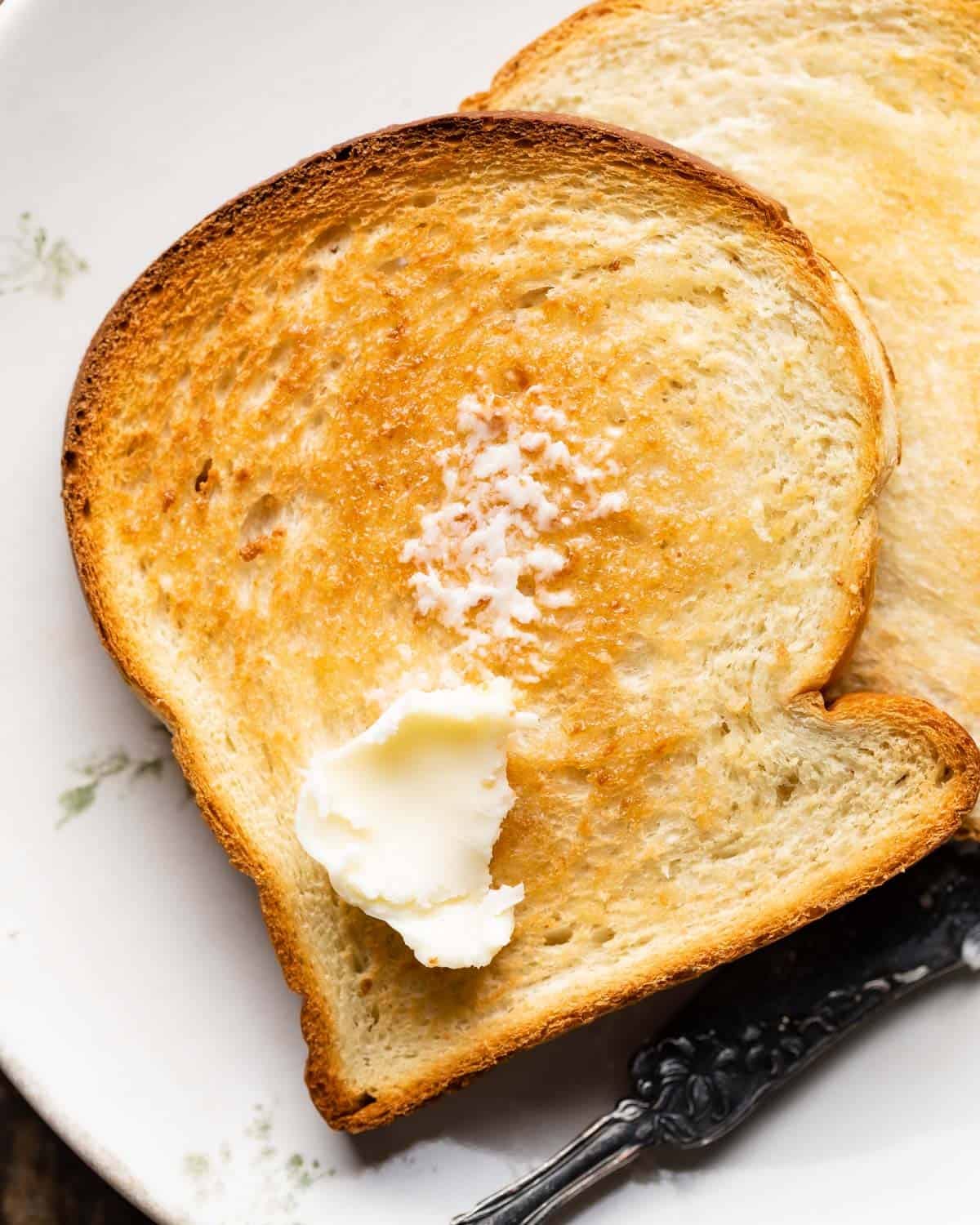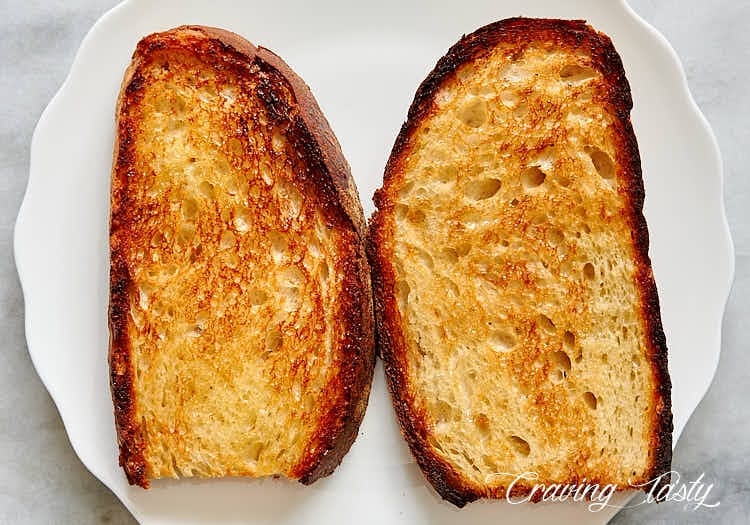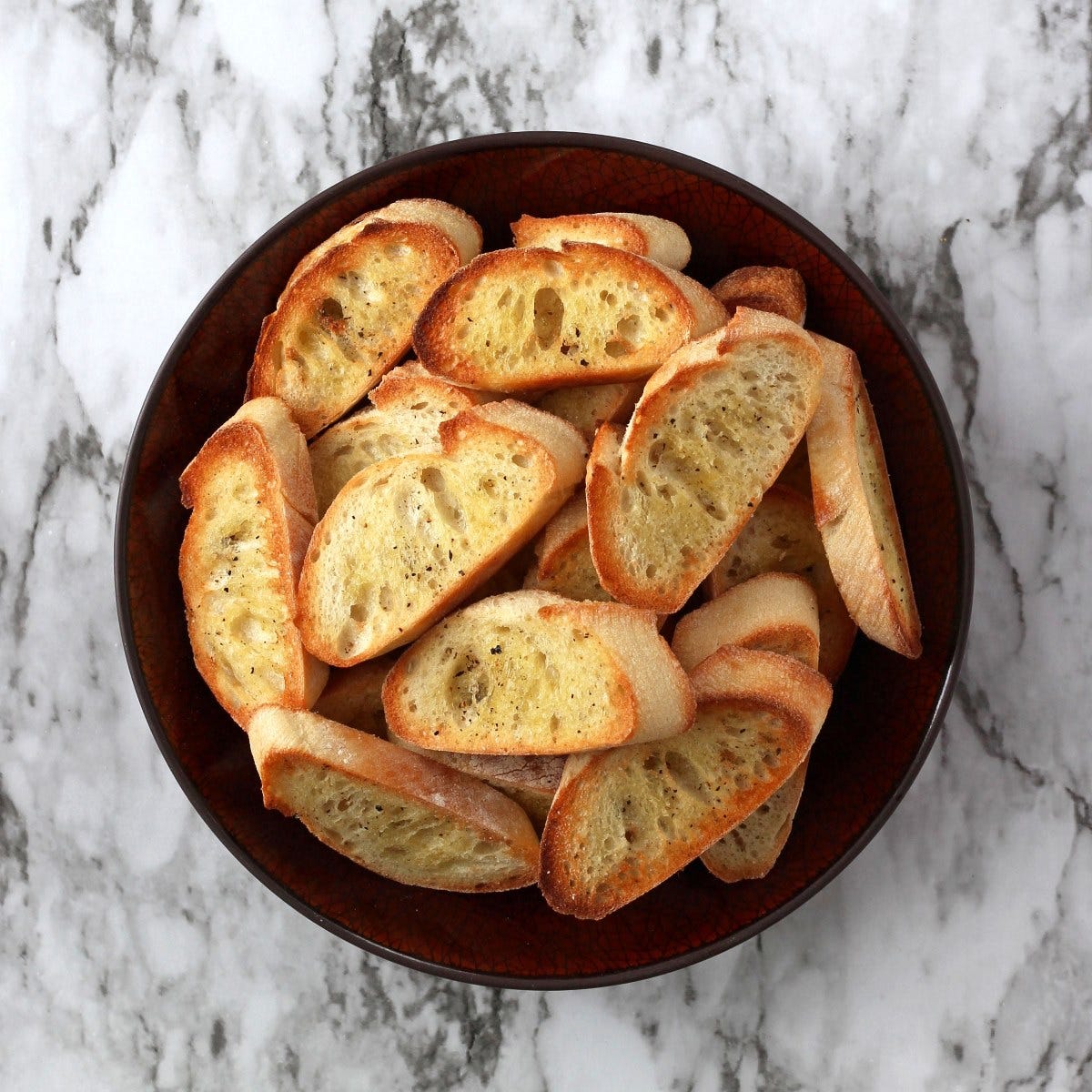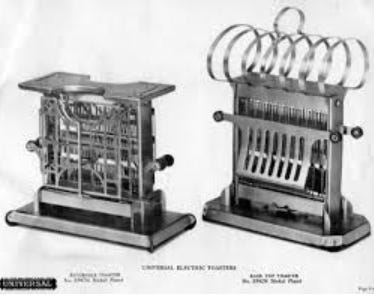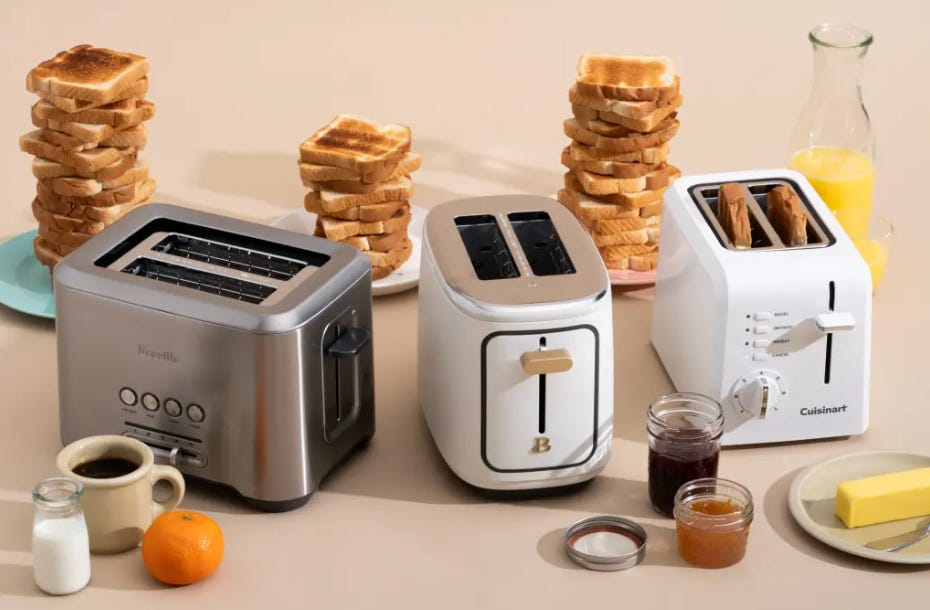Toast is not bread...bread is not Toast
Listen, folks. If I’ve said this once, I’ve said this a thousand times.
Toast is not bread, and bread is not toast!
They are two completely different things, and they are NOT the same. The window of time and specific parameters that are needed for a piece of toast to appear is so finite, it blows my mind. A piece of toast is such a simple thing, but the flavor, texture, and aroma it provides are some of the best in the culinary world, and we need to stop letting it pass us by on the daily.
We need to celebrate it!
There are a lot of great breads out there: thick-cut sourdough, super seedy multigrain, pillowy focaccia, crispy ciabatta, perfectly chewy baguettes, and so many more. And while bread itself is delicious, I’m a big advocate for toasting my bread. Why is this? Because when you add high dry heat, it’s an absolute game changer for bread.
Toast is absolutely fucking incredible!
Toast ranges from a nice sandy light brown to a dark chestnut brown color as the smell of toasted bread fills up your kitchen, welcoming you to greatness. The sound when you crunch into it is like a mini chorus of chipmunks chattering and cheering in unison. The rich, toasty taste of properly toasted bread is one of the best ever while delivering a firm and welcome bite. It’s complex and satisfying without being too overpowering. And it’s a tasty blank slate for so many great things: butter, jam, Nutella, cheese, avocado, meat, or any of the above made into a sandwich. All of those great attributes—from sight to sound, aroma, and flavor—are the result of a chemical change, caramelization, and a small amount of the Maillard reaction which we will talk about in a minute. But first…
If I can give you one cooking tip in the kitchen, it’s this:
Please, please toast your bread!
Please don’t EVER say, “This is JUST a piece of toast.” Do you understand what’s happening here?! You can’t boil a piece of toast into existence—that would be, uhh, awful. You also can’t wish a piece of toast next to your eggs in the morning. You have to heat the bread with a dry heating method within a specific temperature window. It has to be at a high enough temperature for caramelization to happen and for moisture to dissipate. Too low, and it just dries out with little to no flavor. Too hot, too fast, and you burn it.
Yes, of course you first need bread to make toast. But in my professional estimation, it completely changes into a new entity once it’s toasted. So, let’s dig in.
What happens to our bread when it gets toasted? Simply put, it goes through a quick chemical reaction. It needs high dry heat to caramelize the sugars and proteins in the slice. You can’t steam a piece of toast into creation, like we said—that would just be weird, spongy, and pasty for all the wrong reasons. If you’ve ever made a steamed bun or bao (which absolutely has its place), you know that while you get a soft, delicate roll, you don’t get any crispy texture or caramelized flavor.
Quick food science reminder lesson…
Chemical Change: A chemical change occurs when a reaction causes a change at a molecular level. During this reaction, bonds between atoms break or new ones form. After the reaction, the matter's chemical composition changes, and a new substance forms. Basically, once you make toast, you can’t get back a plain piece of bread.
Physical Change: If a physical change occurs, the matter involved still remains the same at its molecular level. While the molecules may rearrange, the internal structure stays intact. In other words, it may look different, but it’s still made of the same material. Example: ice thawing into water, which, when heated, turns into steam. They may all look and feel different, but it’s still water at its most basic level.
Toasting: A process in which the chemical properties, moisture levels, and flavors in foods are changed with the addition of high heat. When something is toasted, the Maillard reaction and caramelization are happening.
Caramelization: The process of heating sugar to a high temperature until it breaks down and turns brown, creating a rich flavor. While we may not think of toast containing sugars, carbohydrates, like those found in bread, break down into sugars.
Maillard Reaction: A chemical reaction that occurs when protein (such as the protein found in gluten) and sugars/carbohydrates in food are heated, causing browning and the creation of new flavors. You may be familiar with this reaction on a piece of steak with a great sear or a golden roasted turkey.
Caramelization requires high heat and sugars.
The Maillard reaction requires high heat along with protein and sugars.
Very similar, but an important difference to note.
Both of these reactions combine to transform our slice of bread, with just enough released moisture for a wonderful experience. Truly amazing!
So please, next time you have a piece of toast in front of you, take a few seconds, close your eyes, take a bite, and truly appreciate a culinary wonder.
Here are some of the best options for toast, in my opinion:
The Best Breads Toasted
Sourdough, thick cut and crusty
Multigrain, extra seedy and dark
Toasted flour tortillas (yes, tortillas count as bread)
Toasted Everything bagel
Diner toast
The Worst Breads Untoasted
Corn tortillas, cold and untoasted (Oh sigh…this is just a shame.)
Burger buns (For the love of God, toast your burger buns!)
Sliced white bread (There’s only a couple times where this is passable, and one of those is eating BBQ in Texas. But most of the time, it’s not good.)
Just toast your bread, folks. It doesn’t take that long and it’s so, so worth it.
What are your best and worst toast experiences?
SIDE DISH: TOASTERS
Can we talk about toasters for a second? Imagine not having a toaster, a toaster oven, or a panini press. How would you cook your toast? Think about what a slow, terrible existence that would be: Turning on the oven. Placing the bread on a tray. Putting it in the oven and not forgetting it. Or getting a skillet out and toasting it there.
Well, that’s what life was like before 1893, when the first electric toaster was invented. Before then, they didn’t have toaster appliances that sit on top of the counter like we know today. And let me tell you, there was A LOT of trial and error from A LOT of hungry engineers out there. Here are a couple early prototypes that sat right over the burner on your stove.
And look at this one! What…is this?!
When electricity became more standard across the country, toaster testing turned to plug-in options that would evenly, tastily toast your bread around a housing that wouldn’t get too hot so that it wouldn’t burn the house down or your children. But interestingly, that housing was made of metal, and it got VERY hot.
IN THE MIND OF A TOASTER ENGINEER:
I would like to put a molten fire on my counter—under the WOODEN cabinets—contain it enough so I don’t burn myself, my wife, and kids OR burn the house down, AND THEN I want it to cook my toast for me just how I like it and not burn the delicate bread slice, either.
No small feat!
Now back to the present day with many sane, safe toasters.
We even have one that is SPECIFICALLY made for toasting hotdog buns AND hotdogs…AT THE SAME TIME. What a world we live in.





